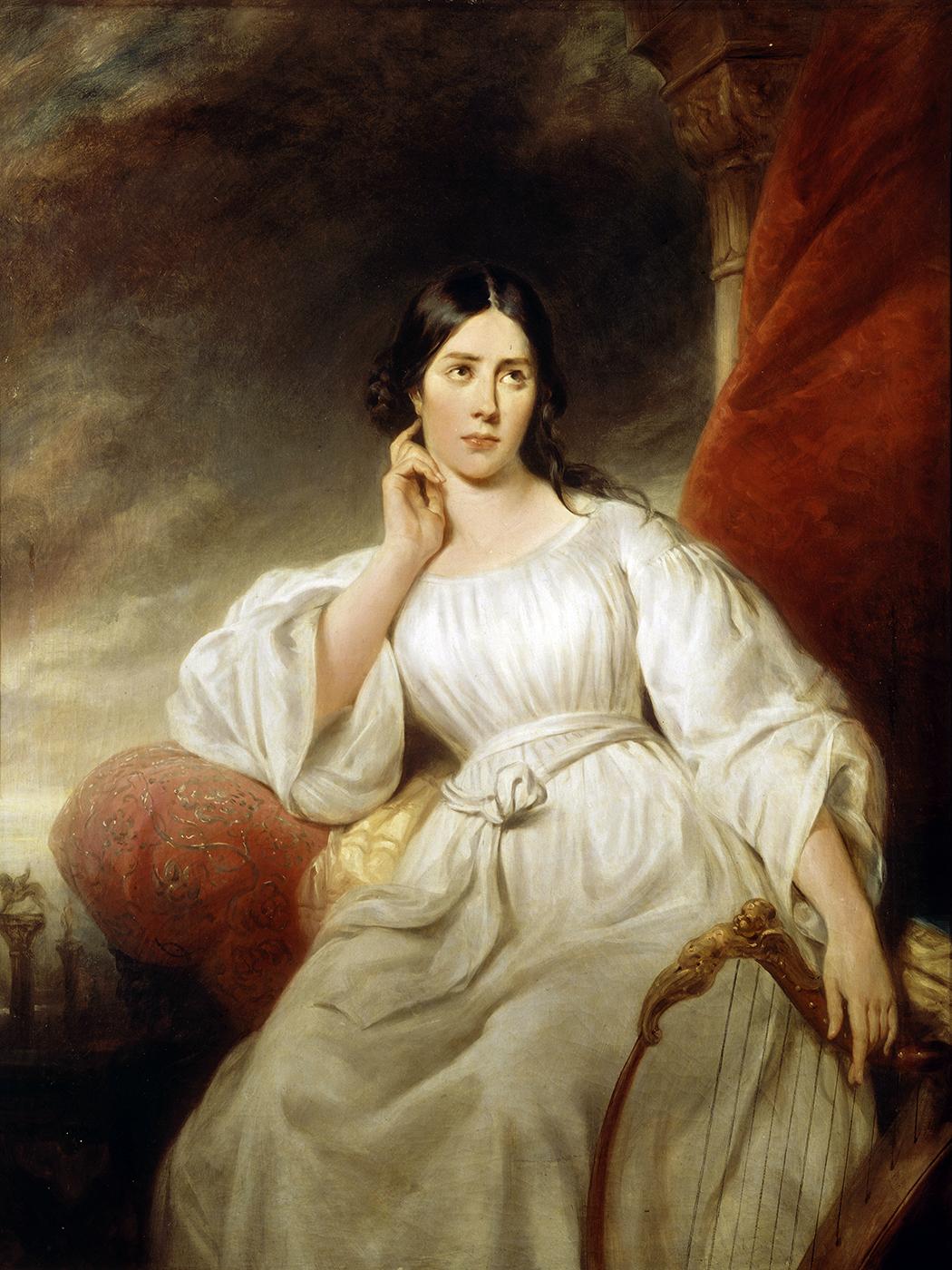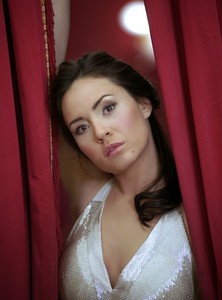
Maria Malibran |
Maria Malibran
Malibran, a coloratura mezzo-soprano, was one of the outstanding singers of the XNUMXth century. The artist’s dramatic talent was revealed to the fullest extent in parts full of deep feelings, pathos, and passion. Its performance is characterized by improvisational freedom, artistry, and technical perfection. Malibran’s voice was distinguished by its special expressiveness and beauty of timbre in the lower register.
Any party prepared by her acquired a unique character, because for Malibran to play a role meant to live it in music and on stage. That is why her Desdemona, Rosina, Semiramide, Amina became famous.
Maria Felicita Malibran was born on March 24, 1808 in Paris. Maria is the daughter of the famous tenor Manuel Garcia, a Spanish singer, guitarist, composer and vocal teacher, the ancestor of a family of famous vocalists. In addition to Maria, it included the famous singer P. Viardo-Garcia and the teacher-vocalist M. Garcia Jr.
From the age of six, the girl began to participate in opera performances in Naples. At the age of eight, Maria began to study singing in Paris under the guidance of her father. Manuel Garcia taught his daughter the art of singing and acting with a rigor bordering on tyranny. Later, he said that Mary had to be forced to work with an iron fist. But nevertheless, having managed to introduce her stormy innate temperament into the boundaries of art, her father made a magnificent artist out of her daughter.
In the spring of 1825, the Garcia family traveled to England for the Italian opera season. On June 7, 1825, seventeen-year-old Maria made her debut on the stage of the London Royal Theater. She replaced the ill Giuditta Pasta. Having performed before the English public as Rosina in The Barber of Seville, learned in just two days, the young singer had a terrific success and was engaged to the troupe before the end of the season.
At the end of the summer, the Garcia family leaves on the New York packet boat for a tour of the United States. In a few days, Manuel assembled a small opera troupe, including members of his own family.
The season opened on November 29, 1825, at the Park tietre by the Barber of Seville; at the end of the year, Garcia staged his opera The Daughter of Mars for Maria, and later three more operas: Cinderella, The Evil Lover and The Daughter of the Air. The performances were both artistic and financial success.
On March 2, 1826, at the insistence of her father, Maria married in New York an elderly French merchant, E. Malibran. The latter was considered a wealthy man, but soon went bankrupt. However, Maria did not lose her presence of mind and headed the new Italian opera company. To the delight of the American public, the singer continued her series of opera performances. As a result, Maria managed to partially repay her husband’s debts to her father and creditors. After that, she forever parted with Malibran, and in 1827 returned to France. In 1828, the singer first performed at the Grand Opera, the Italian Opera in Paris.
It was the stage of the Italian Opera that in the late 20s became the arena of the famous artistic “fights” between Maria Malibran and Henriette Sontag. In operas where they appeared together, each of the singers sought to surpass her rival.
For a long time, Manuel Garcia, who quarreled with his daughter, rejected all attempts at reconciliation, although he lived in need. But they sometimes had to meet on the stage of the Italian opera. Once, as Ernest Legouwe recalled, they agreed in the performance of Rossini’s Othello: the father – in the role of Othello, aged and gray-haired, and the daughter – in the role of Desdemona. Both played and sang with great inspiration. So on the stage, to the applause of the public, their reconciliation took place.
In general, Maria was the inimitable Rossini Desdemona. Her performance of the mournful song about the willow struck the imagination of Alfred Musset. He conveyed his impressions in a poem written in 1837:
And the aria was in all the likeness of a moan, What only sadness can extract from the chest, The dying call of the soul, which is sorry for life. So Desdemona sang the last before going to bed … First, a clear sound, imbued with longing, Only slightly touched the depths of the heart, As if entangled in a veil of fog, When the mouth laughs, but the eyes are full of tears … Here is the sad stanza sung for the last time, The fire passed in the soul, devoid of happiness, light, The harp is sad, struck with melancholy, The girl bowed, sad and pale, As if I realized that music is earthly Unable to embody the soul of her impulse, But she continued to sing, dying in sobs, In his hour of death he dropped his fingers on the strings.
At the triumphs of Mary, her younger sister Polina was also present, who repeatedly took part in her concerts as a pianist. The sisters – a real star and a future one – did not look like each other at all. Beautiful Maria, “a brilliant butterfly”, in the words of L. Eritte-Viardot, was not capable of constant, assiduous work. Ugly Polina was distinguished in her studies by seriousness and perseverance. The difference in character did not interfere with their friendship.
Five years later, after Maria left New York, at the height of her fame, the singer met the famous Belgian violinist Charles Berio. For several years, to the displeasure of Manuel Garcia, they lived in a civil marriage. They officially got married only in 1835, when Mary managed to divorce her husband.
On June 9, 1832, during a brilliant tour of Malibran in Italy, after a short illness, Manuel Garcia died in Paris. Deeply saddened, Mary hastily returned from Rome to Paris and, together with her mother, took up the arrangement of affairs. The orphaned family – mother, Maria and Polina – moved to Brussels, in the suburbs of Ixelles. They settled in a mansion built by the husband of Maria Malibran, an elegant neoclassical house, with two stucco medallions above the columns of the semi-rotunda that served as the entrance. Now the street where this house was located is named after the famous singer.
In 1834-1836, Malibran successfully performed at the La Scala Theatre. On May 15, 1834, another great Norma appeared at La Scala – Malibran. To perform this role alternately with the famous Pasta seemed unheard of audacity.
Yu.A. Volkov writes: “Pasta’s fans unequivocally predicted the failure of the young singer. Pasta was considered a “goddess”. And yet Malibran conquered the Milanese. Her game, devoid of any conventions and traditional clichés, bribed with sincere freshness and depth of experience. The singer, as it were, revived, cleared the music and the image of everything superfluous, artificial, and, penetrating into the innermost secrets of Bellini’s music, recreated the multifaceted, lively, charming image of Norma, a worthy daughter, faithful friend and brave mother. The Milanese were shocked. Without cheating on their favorite, they paid tribute to Malibran.
In 1834, in addition to Norma Malibran, she performed Desdemona in Rossini’s Otello, Romeo in Capulets and Montagues, Amina in Bellini’s La Sonnambula. The famous singer Lauri-Volpi noted: “In La Sonnambula, she struck with the truly angelic incorporeality of the vocal line, and in Norma’s famous phrase “You are in my hands from now on” she knew how to put the immense fury of a wounded lioness.”
In 1835, the singer also sang the parts of Adina in L’elisir d’amore and Mary Stuart in Donizetti’s opera. In 1836, having sung the title role in Vaccai’s Giovanna Grai, she said goodbye to Milan and then briefly performed in theaters in London.
The talent of Malibran was highly appreciated by composers G. Verdi, F. Liszt, writer T. Gauthier. And the composer Vincenzo Bellini turned out to be among the hearty fans of the singer. The Italian composer spoke about the first meeting with Malibran after the performance of his opera La Sonnambula in London in a letter to Florimo:
“I don’t have enough words to convey to you how I was tormented, tortured or, as the Neapolitans say,“ stripped ”my poor music by these Englishmen, especially since they sang it in the language of birds, most likely parrots, which I was not able to understand forces. Only when Malibran sang did I recognize my Sleepwalker…
… In the allegro of the last scene, or rather, in the words “Ah, mabbraccia!” (“Ah, hug me!”), She put so many feelings, uttered them with such sincerity, that at first surprised me, and then gave me great pleasure.
… The audience demanded that I go on stage without fail, where I was almost dragged by a crowd of young people who called themselves enthusiastic fans of my music, but whom I did not have the honor to know.
Malibran was ahead of everyone, she threw herself on my neck and in the most enthusiastic outburst of joy sang a few of my notes “Ah, mabbraccia!”. She said nothing more. But even this stormy and unexpected greeting was enough to make Bellini, already overexcited, speechless. “My excitement has reached the limit. I could not utter a word and was completely confused …
We walked out holding hands: the rest you can imagine for yourself. All I can tell you is that I don’t know if I’ll ever have a greater experience in my life.”
F. Pastura writes:
“Bellini was passionately carried away by Malibran, and the reason for this was the greeting she sang and the hugs with which she met him backstage at the theater. For the singer, expansive by nature, it all ended then, she could not add anything more to those few notes. For Bellini, a highly flammable nature, after this meeting, everything just started: what Malibran did not tell him, he came up with himself …
… He was helped to come to his senses by the decisive manner of Malibran, who managed to inspire the ardent Catanian that for love he took a deep feeling of admiration for her talent, which never went beyond friendship.
And since then, relations between Bellini and Malibran have remained the most cordial and warm. The singer was a good artist. She painted a miniature portrait of Bellini and gave him a brooch with her self-portrait. The musician zealously guarded these gifts.
Malibran not only drew well, she wrote a number of musical works – nocturnes, romances. Many of them were subsequently performed by her sister Viardo-Garcia.
Alas, Malibran died quite young. Mary’s death from a fall from a horse on September 23, 1836 in Manchester caused a sympathetic response throughout Europe. Almost a hundred years later, Bennett’s opera Maria Malibran was staged in New York.
Among the portraits of the great singer, the most famous is by L. Pedrazzi. It is located in the La Scala Theater Museum. However, there is a completely plausible version that Pedrazzi only made a copy of the painting by the great Russian artist Karl Bryullov, another admirer of Malibran’s talent. “He talked about foreign artists, gave preference to Mrs. Malibran …”, recalled the artist E. Makovsky.





